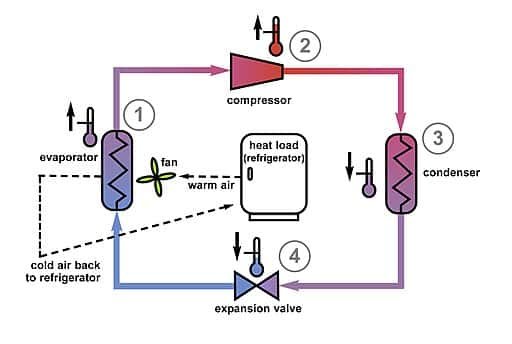Refrigerators can be found in every home, food and beverage industry, and commercial establishment. The power consumption of a refrigerator cleaner ranges between 120 watts to 300 watts. A typical refrigerator consumes 180 watts. Calculate the energy usage of refrigerators below:
Enter the wattage, hours of usage, and cost per kWh. The energy usage calculator for refrigerators gives you the total energy consumed by them. Also, you can find how much power your refrigerator consumes.
Energy usage of refrigerators
| Wattage: | |
| Average usage hours per day: | |
| Cost per unit*:(Global Electricity rates) | |
| Electricity usage per hour: | |
| Electricity usage per day: | |
| Usage cost per hour: | |
| Usage cost per day: | |
| Usage cost per month: | |
| Usage cost per year: |
Terms and definitions:
Wattage:
Power usage of the device in watts as mentioned on its label.
Cost per unit:
The average cost per unit charged by the electric utility. Every country has different tariff rates. Visit: Global Electricity prices for details if you don’t know how much the utility company charges you per unit or kWH.
Units per day:
The number of units of electricity consumed by the load every day considering the entered operation hours.
Hours of usage:
The number of hours the load is used per day.
The electricity usage depends on the wattage and the number of hours of usage. The utility company charges you for the total kilowatt-hour of energy you have consumed. Kilowatt-hour is the product of the power consumption of the load and the number of hours of usage.
Power consumption of refrigerators

A typical refrigerator consumes 0.18kWh of energy per hour of usage. That means an hour of usage can cost you 0.02 cents.
Refrigerators maintain a temperature close to the freezing point of water. At this temperature, it is difficult for bacteria to survive. In order to maintain this temperature, it makes use of a compressor, condenser, and refrigerant (normally ammonia or R-290). The compressor compresses the hot refrigerant in vapor form to a high-pressure gas, which passes through the condenser where it is cooled down.
This cool liquid refrigerant enters the expansion valve, where a sudden pressure drop occurs. This low-pressure refrigerant enters the refrigerator and absorbs heat from the stored food and evaporates. The evaporated refrigerant enters the compressor again and the cooling cycle continues.
Energy-saving tips for refrigerator
- Keep the fridge closed always. Whenever you need to open it, open it as little as possible.
- Regularly clean the condenser located behind the refrigerator.
- Do not place hot food items in a fridge.
- Buy an energy-efficient device.
- Shift your refrigerator to a cooler location and away from heat sources.
- The efficiency of your refrigerator reduces with age. Try not to use old refrigerators.
Other power consumption calculators
Air conditioner Electric iron LED bulbs CFL Lamps Ceiling fans Clothes Dryer Dishwashers Microwave oven Vacuum cleaner Refrigerators Water heater Hairdryer Toaster Coffee maker Electric kettle Blender Mixer grinder Juicer Space Heater Air Purifiers Deep fryer Freezers Induction cooktop Xbox & PlayStation Rice cooker Steamer Cooker hood Exhaust fans Humidifier